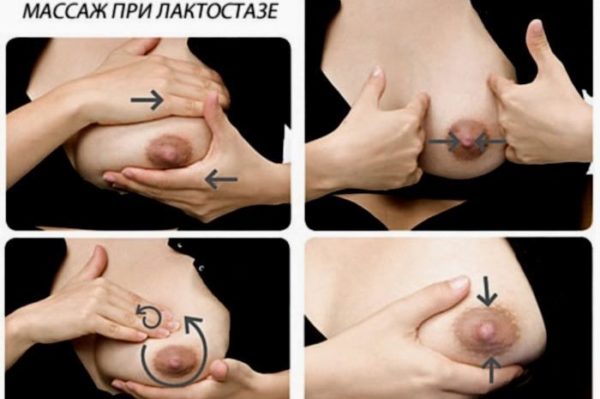When does it become necessary to feed expressed milk?
Feeding a baby with expressed breast milk is usually necessary in three situations: 1. When there are problems with latching onto the breast. This may be caused by physical weakness of the newborn (in the case of a premature or low birth weight baby, or during a period of severe illness) or an atypical nipple shape (flat or inverted nipple). 2. When the baby does not want to make an effort to get milk. This is often seen in children who have learned what a bottle is. The child very quickly understands that drinking from a pacifier is much easier than from a breast. 3. When the mother cannot be near the child at the time of feeding. This is relevant for women who need to go to work early, continue their studies, or temporarily leave the city. As you can see, if a woman understands how to properly express and store breast milk, she has the opportunity to preserve breastfeeding not only when her child cannot (or does not want) to breastfeed, but also when the mother herself needs to reason to stay away from the baby for some time.
What does mixed feeding lead to?
Mixed feeding is recommended if the baby cannot get enough breast milk
Most mothers resort to it in cases where the baby, after sucking the mother’s breast, nevertheless remains hungry. In this case, naturally, he needs to be fed with expressed milk from a bottle, and if this is not available, then with adapted milk formulas. But this method of feeding over time leads to the fact that the baby refuses the mother’s breast altogether, and here’s why:
- formula milk is much more satisfying, it takes less to fill you up;
- To drink from a bottle, you don’t need much effort - the mixture easily enters your mouth from the nipple.
Sucking the mother's breast requires a lot of work from the child, no joke. He has to make an effort, using his sucking reflex to the fullest. Therefore, doctors strongly recommend resorting to mixed feeding only as a last resort, and using pumping as much as possible to increase the flow of milk, allowing the baby to be completely saturated from breastfeeding over time.
To do this, the mother should:
- drink as many liquids as possible;
- put the baby to the breast more often;
- additionally express at night or while the baby is sleeping.
How to express breast milk correctly?
In Soviet times, nurses told all new mothers in the maternity hospital in detail and showed them how to properly express breast milk. Formulas were then very expensive, and their availability and quality left much to be desired, so women desperately fought to maintain breastfeeding. Today on store shelves you can find absolutely any formula for any age, but none of them will ever replace a child’s mother’s milk, so pumping remains the main tool in establishing breastfeeding. Pumping helps avoid mastitis when there is too much milk, and stimulates the mammary glands when, on the contrary, there is not enough milk. It also allows you to keep a supply of breast milk at home in case mommy needs to go away. There are 2 main ways of expressing: • manual expression; • expressing using a breast pump (manual or electric). If you don't plan on feeding your baby pumped milk often, collect the milk by hand or using an inexpensive manual breast pump. If you need to be separated from your baby often and for a long time, purchase an electric model.
Manual expression
Many women do not understand how to properly express breast milk by hand. Yes, not everyone succeeds in expressing by hand the first time: it is quite painful and inconvenient. In order for the process to be as efficient and painless as possible, it is important to master a certain technique. Before pumping, it is advisable to thoroughly wash your hands and perform a light massage of the mammary glands. To stimulate milk production, it is also recommended to drink a glass of warm tea. Directly when expressing with your hand, you need to support the breast from below so that your index finger is on the lower edge of the areola. With downward movements of the thumb, the milk is “driven” towards the nipple and, with moderate pressure from the thumb and forefinger, is squeezed out of the breast. If feeding time has not yet come, pumping will proceed very slowly at first: milk will flow out literally drop by drop. After the rush, which you will guess from the familiar signs (heaviness in the chest, tingling, burning), the milk will begin to be expressed in a stream. If, after repeated attempts, you have not been able to figure out how to properly express breast milk by hand, contact a breastfeeding specialist or try using a breast pump: this usually makes the process faster and easier.
Expressing breast milk with a breast pump
A breast pump is a fairly convenient mechanism for expressing breast milk. You simply apply it to your breast so that the nipple is located in the center of a special funnel, and turn on the device (when it comes to an electric model) or rhythmically squeeze the “pear” or lever with your hand (if it is a manual version). How to properly express breast milk with a breast pump is usually written in the instructions for the device. Do not forget to sterilize all elements and containers that will come into contact with breasts and milk.
What is the difference between breastfeeding and bottle feeding?
The use of a baby bottle with a nipple for feeding babies has specific features. The main differences from traditional GW are as follows.
- When breastfeeding, the baby independently regulates the duration of the process, sucking as much as he needs to eat. When feeding from a bottle, you have to adhere to pre-calculated average nutritional standards.
- Lactation of mother's milk during breastfeeding adapts to the requirements of the child's body, changing as it grows. When feeding from a bottle, the mother has to constantly pump, doing this often and as completely as possible, in order to provide the required amount of nutrition for the baby herself.
The process of expressing milk using a breast pump can sometimes be replaced by manual expression.
How to properly store breast milk?
In order for milk to retain its valuable properties for a long time and not spoil, you need to know how to properly store expressed breast milk. It is worth saying that the most important thing when storing expressed milk is the correct choice and sterility of containers, as well as compliance with the temperature regime and shelf life. How long you can store expressed milk depends mainly on the temperature. For example, when stored under normal room conditions (at a temperature of 22–25 degrees), milk must be used within 4–6 hours, and the remainder must be disposed of. If you place the bottle in a cool place (19–22 degrees), the milk will not spoil for 8–10 hours. At 15 degrees, milk can be stored for a day.
Can I store expressed milk in the refrigerator or freezer?
Many women are interested in whether it is possible to store expressed milk in the refrigerator and whether it will lose its value. We answer: yes, it is possible and even necessary to store leftover expressed milk in the refrigerator if you do not plan to use it in the next 4-6 hours. The supply can be kept in the refrigerator for up to 7–8 days, but it should be kept not in the door, but in the coldest part of the cabinet (with a temperature range of 0–4 degrees). Any clean glass or food-grade plastic container is suitable as a container. Some breast pumps come with special bottles, containers or bags for collecting and storing breast milk. Important: in order to promptly dispose of “expired” milk, it is necessary to indicate the pumping date on each container. Interesting fact: colostrum in its composition and properties is very different from mature milk, so even at a temperature of 27–32 degrees it can be stored for 12 hours.
How to determine if your baby is getting enough to eat
The main signs that the baby is full are his satisfied face and sound sleep.
You can tell if your baby is full if you are breastfeeding by two simple signs:
- He usually stops suckling on his own when he's full;
- Immediately after feeding, when full, the baby falls asleep.
If you bottle feed him, you need to know the approximate dose of food in advance. The calculations here are simple:
- for the first 1.5 months, the toddler consumes 1/5 of its weight in milk per day;
- for the next 3.5 months, the volume should correspond to 1/6 of its weight.
To understand whether such feeding is beneficial for the baby, whether he is developing properly, you need to resort to control weighing every month. The indications should be as follows:
- by the end of the first month, it is advisable for your baby to gain about 600 grams of weight;
- in the following months and up to six months he should gain a little more, up to 800 grams per month;
- in the second half of the year, weight gain decreases slightly to approximately 400 grams every month.
Of course, weight gain largely depends on the individual characteristics of the baby. In one month he may “get heavier” by a whole kilogram, in others he may gain a little less than normal.
However, you yourself can easily find your way by simply assessing the condition of the baby. He is usually calm and peaceful, wants to eat at regular intervals, and besides, his bowel movements are quite normal. By the way, don’t be alarmed if in the third month your babies’ bowel movements suddenly become too rare, and for quite a long period of time, up to five days. For babies at this age who are exclusively breastfed, this is quite normal.
Rules for freezing breast milk
There has long been debate about whether it is possible to freeze expressed breast milk. After all, after 1-2 hours it changes its taste. Experiments have shown that human milk, when frozen, retains a large share of its beneficial properties, so it can be stored in the freezer in order to subsequently defrost and use it to feed a child. The shelf life of frozen milk is strictly regulated: if we are talking about a freezer without its own door, the milk is stored in such conditions for up to 14 days. If expressed milk is placed in a freezer, which is a separate compartment with its own door, or in a chest freezer, the storage time increases to 4 and 6 months, respectively. When freezing and thawing breast milk, a number of rules must be followed: • indicate the date of freezing; • use suitable containers (mostly food grade plastic); • do not add fresh milk to a container with previously frozen milk (otherwise it will be difficult for you to control the expiration date); • defrost milk in a specialized device or in a container with warm water; • do not refreeze defrosted milk; • do not overheat or boil milk after defrosting; • use defrosted milk for the first 2 days (store in the refrigerator).
How long should you pump?
The frequency is directly determined by the age of your baby. At the initial stage of their lives, children, as a rule, only eat and sleep. With breastfeeding, you have to apply them to the breast on average 18 times a day, so pumping will take a lot of time, and you will have to do it often - the more often, the better, in order to achieve suitable lactation.
Doctors recommend pumping every hour and little by little. Expressing at night will also be necessary, because it is from two in the morning until six in the morning that the mother’s body produces the bulk of breast milk, and of the best quality.
A week after the birth of the baby, the mother needs to reach 1,000 milliliters per day. If the baby does not need such an amount of food, long-term storage of milk should be organized by special freezing.
Behavior at the first signs of stagnation
If the first signs of lactostasis appear - soreness and swelling of the mammary glands, you need to gently warm them up. The easiest way is to take a warm shower or bath. You can make a warm compress from honey or cabbage leaves, or drink hot tea. Heat expands the glandular ducts and promotes the outflow of milk.

Straining lactostasis at home should begin with a light massage. No rough intensive kneading should be carried out. Part of the procedure can be “entrusted” to the baby: sucking the breast most effectively restores the functioning of the ducts. To better help your baby cope with the problem of milk stagnation, you should slightly reduce the next portion of complementary foods.
When lactostasis begins acutely, with severe pain, swelling, fever, and deterioration in general well-being, you need to consult a doctor. He will conduct a diagnosis and determine whether mastitis has developed.
Physiotherapeutic procedures can be performed in a medical facility: UHF, ultrasound. Expressing during lactostasis after such procedures is much easier to perform.
Let's summarize
Many people mistakenly believe that the baby is not getting enough colostrum and start pumping to increase the volume of secretions. However, this opinion is wrong. Colostrum is a very valuable and nutritious product. It contains substances that provide strong immunity to the child for several months of life. In addition, in the first days after birth, the baby’s gastrointestinal tract is just beginning to function, and the amount of colostrum is quite enough to provide the baby’s internal organs with the necessary (but not more!) load.
It is also worth noting that expressed colostrum should be fed to the baby immediately. It cannot be stored for a long time even in the refrigerator, so the question of constant pumping disappears by itself.
In any case, it should be borne in mind that sites on the Internet can only give some recommendations. But if you have any problems or questions about breastfeeding, you should contact a specialist so as not to risk your health or the health of your baby.
Expressing breasts after caesarean section
Many women do not know whether it is possible to express their breasts after childbirth surgery. After a cesarean section, the appearance of colostrum is somewhat delayed, in contrast to natural childbirth. In addition, difficulties often arise with attaching the baby to the breast, since after several days of separation the baby gets used to the nipple. When a mother is in intensive care after a cesarean section and wants to breastfeed her baby, then pumping will only be beneficial. It will enhance the secretion of colostrum and support lactation during the period of separation from the baby. (Check out the article “What to do if there is no colostrum after childbirth”)











